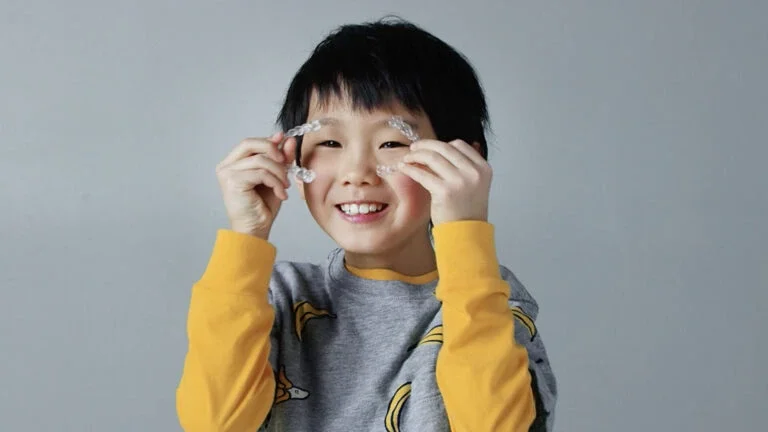Orthodontics Care : Where & When should we begin?
When it comes to a child’s smile, timing matters. Many parents believe orthodontic treatment only begins in the teenage years, once all the permanent teeth have erupted. However, early orthodontic assessment can make a world of difference in your child’s growth, development, and confidence.
Why Start Early?
Orthodontic problems don’t just affect teeth — they influence jaw growth, breathing, sleep, and even mental well-being. When left unaddressed, these issues may become more severe and harder (or more costly) to treat later in life.
If orthodontic care is delayed, children may experience:
Crowded or crooked teeth
Misaligned bites (overbite, underbite, crossbite)
Mouth breathing and airway obstruction
Poor oral muscle habits (thumb sucking, tongue thrusting, lip biting)
Speech difficulties and abnormal swallowing patterns
Growth imbalances in the face and jaw
When Should the First Assessment Be Done?
The first orthodontic assessment can be done as early as 4 years old. At this stage, dentists and orthodontists can identify early warning signs such as:
Poor or incorrect muscle habits
Mouth breathing patterns
Narrow jaws or crowded baby teeth
Crossbites or open bites forming
Incorrect tongue posture or swallowing habits
Missing or extra teeth
Abnormal airway growth
Physical defects such as cleft lip/palate
Jaw growth abnormalities
By detecting these issues early, we can guide jaw development, correct harmful oral habits, and create the foundation for a healthier smile.
The Range of Orthodontic Treatment
Orthodontic treatment is not a one-size-fits-all solution. Depending on your child’s needs, it can range from:
Simple early interventions habit-breaking appliances, space maintainers, minor corrections, Myobrace, Myofunctional training
To longer, more complex treatments that require meticulous planning, monitoring, and multiple stages over the years. such as removable orthodontic appliances, Invisalign , extractions, dental surgeries and more
Treatment may also involve assessing and collaborating on other areas of health such as:
Airways and breathing (to prevent chronic mouth breathing and sleep issues)
Speech and swallowing function
Facial and jaw development
Overall growth patterns
Impacts on a Child’s Overall Development
Early orthodontic care doesn’t just change a smile — it can positively affect many aspects of a child’s life, including:
Mouth breathing & airway development: Correcting breathing patterns supports healthy growth, better oxygenation, and balanced facial development.
Sleep quality: Proper airway function improves rest, which is essential for learning and growth.
Mental acuity: Better sleep and oxygen flow are linked to improved concentration, attention span, and school performance.
Psychological impacts: Addressing bite and jaw issues early can reduce teasing, anxiety, or self-consciousness.
Self-esteem & confidence: A healthy smile encourages children to express themselves freely.
Character development: The combination of improved health, confidence, and trust in their dentist supports resilience and a positive outlook as they grow.
Beyond Treatment: Building Trust and Planning Ahead
Starting orthodontic care early doesn’t just benefit your child’s health — it also helps with long-term success by:
Building trust and comfort: Early visits allow children to feel safe in the dental chair and create a positive relationship with their dentist. This rapport is crucial for long treatments that may extend into the teenage years.
Helping parents plan ahead: With early assessments, families can prepare better for treatment schedules, align appointments with school holidays, and even plan financially by exploring insurance coverage or phased treatment options.
Benefits of Early Orthodontic Care
Guides jaw development for better alignment
Improves breathing and sleep quality by addressing airway issues
Boosts concentration, learning, and mental sharpness
Reduces crowding and lowers the chance of extractions later on
Encourages proper oral habits and healthier facial development
Detects serious conditions early, such as clefts or jaw abnormalities
Supports emotional well-being, reducing social or psychological stress
Builds self-esteem and character through a healthy, confident smile
Creates a trusted dentist-child relationship for smoother care
Gives parents time to plan schedules, school holidays, and financial options
The Takeaway for Parents
Orthodontic care is not just about straightening teeth — it’s about supporting healthy growth, mental and emotional well-being, and long-term confidence. By starting early, you can prevent small issues from becoming big problems while ensuring your child thrives both physically and emotionally.
👉 If your child is 4 years or older, now is the perfect time for their first orthodontic assessment. Early detection today means a healthier, happier, and more confident tomorrow.
